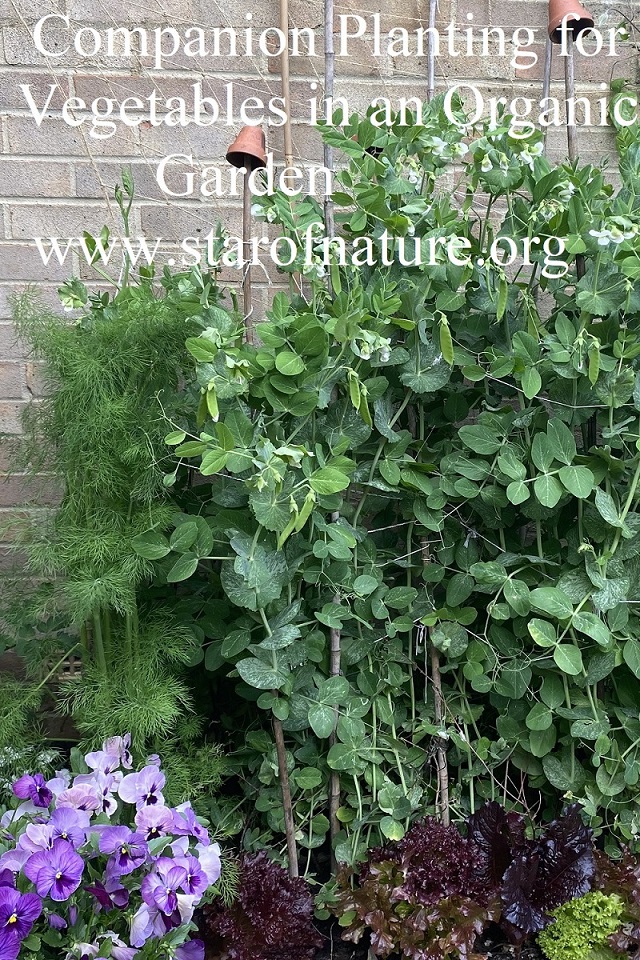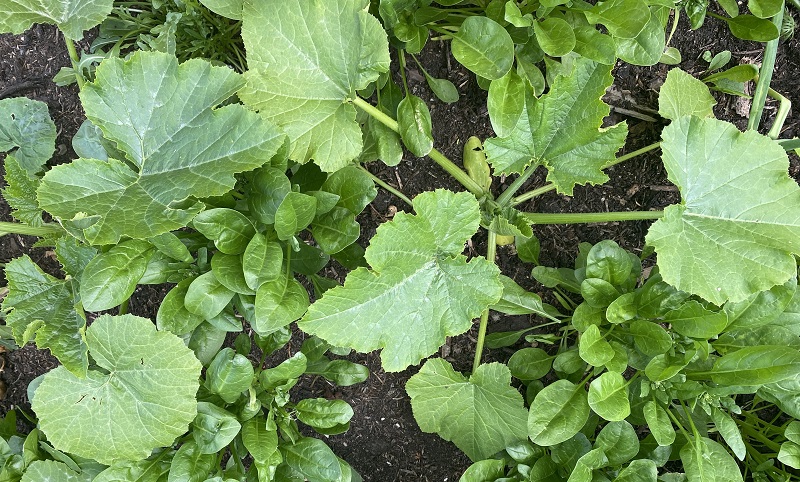Companion Planting for Vegetables in an Organic Garden
Companion planting for vegetables is used in organic gardening and farming to maintain the health of plants and the soil. It helps to avoid monoculture and the problems it creates.
Monoculture is very rare in nature, because it exhausts the soil and produces ideal conditions for the spread of pests and diseases.
What happens when a pest gets to a field planted with a single species? It finds a perfect environment to thrive and spread – plenty of food and no predators. Companion planting helps to avoid this.
In addition, when mixed planting is used, it is possible to grow the same vegetables in the same space for several years. This is impossible in monoculture without the loss of soil fertility and the growth of pests and diseases.
How plants influence one another
Plants influence one another in several ways:
1. They excrete chemicals from their leaves and roots. Chemicals produced by leaves include airborne substances and substances that are washed off by the rain and absorbed into the soil.
Chemicals excreted from the roots are very variable and include many growth stimulants. All substances are absorbed by other plants and can have a strong positive or negative influence on them.
2. Plants protect one another. Chemicals produced by their roots and leaves can suppress diseases or deter insects.
Many insects use smell to locate their food. They find some strong smells unpleasant. Strong smells can also confuse insects by masking the scent of their food.
3. Plants establish a special microclimate. Tall species create shade and humidity for lower levels in a plant community, and so help to preserve moisture in the soil. Vegetables, such as spinach and lettuce, need this because they don’t like hot and dry conditions.
4. Plants alter the chemical composition and structure of the soil and thus prepare it for the following crop. This is one of the reasons for the use of green manures.
The benefits of companion planting
In companion planting one species is usually has a role of the main crop, and another of a supporting crop. A supporting companion performs the following functions:
- helps to create good growing conditions by protecting the soil from weeds and dryness
- suppresses pests and diseases.
- attracts beneficial insects, such as bees that pollinate the main crop
- enriches the soil with organic matter and minerals.
A companion plant can also function as an additional crop. While the main crop remains small, the space is given to compact, but fast-growing vegetables. They are harvested in time for the main crop to take over the space.
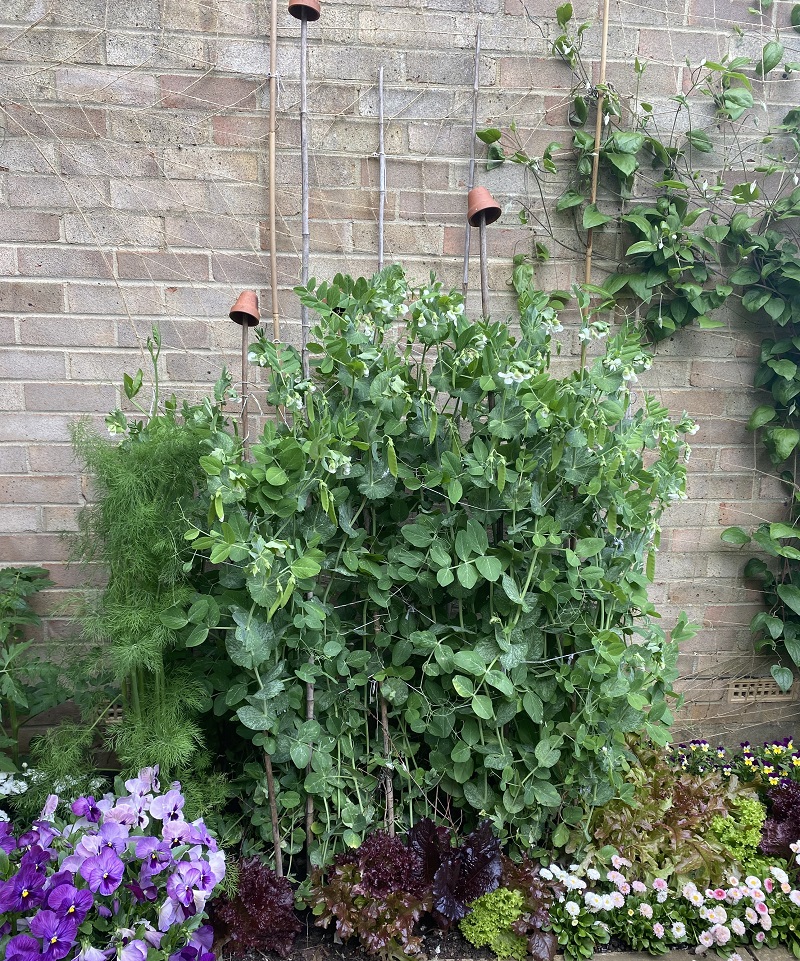
A list of companion plants for vegetables: improving taste and fertility
Aromatic herbs
Aromatic herbs are good companions for almost all vegetables. Such herbs include lavender, sage, hyssop, parsley, dill, thyme, oregano, chamomile and chervil. They make vegetables not only healthier, but also more tasty. For example, basil improves the taste of tomatoes, and dill – the taste of cabbage.
Dandelion
Dandelion emits a large amount of ethylene, a gas that speeds up the ripening of fruit and is used commercially for this purpose. It is therefore a good companion for apples and other fruit trees, as well as for many other vegetables, including tomatoes.
Dandelion is also attractive to bees that collect its nectar and pollen. When they visit the garden, they also pollinate fruit trees, gooseberries and currants that flower at the same time.
Bean family
Bean family includes different varieties of beans and peas, common vetch, hairy vetch, lucerne, lupin and clover. Plants of this family enrich the soil with nitrogen. They have a symbiotic relationship with bacteria that inhabit their roots and fixes nitrogen from the atmosphere, making it available to plants. As a result they provide nitrogen not only for themselves but also for other plants that grow nearby.
Dwarf (rather than climbing) beans are commonly used as companions that enrich the soil for other vegetables.
Celery family and onion family
Plants of the celery family, including carrot, parsley, celery and parsnip are good companions for plants of the onion family, including onions and garlic.
Radish and beans
Radish is a good companion to dwarf beans. When it is planted with them, it becomes larger and tastier, and is rarely attacked by pests. Radish is planted two weeks earlier than beans, both because it is more hardy and to ensure that its seedlings are not overwhelmed by strong-growing beans.
Spinach
Spinach is a good companion plant for most vegetables. Its roots emit saponins that encrease absorption of nutrients from the soil. Therefore potatoes, tomatoes, beans and beetroot grow well next to spinach.
Weeds
Weeds have a role in maintaining the soil fertility. It is counterproductive to try to get rid of the completely. A better strategy is to keep them within limits. Research has shown that the presence of some weeds improves taste and productivity of crops.
It is recommended to create a permanent ground cover in fruit orchards that includes wild members of the bean family, such as the white clover, lucerne, vetches and lupin. They enrich the soil with nitrogen and reduce the incidence of disease and pests.
A list of companion plants for vegetables: pest control
As mentioned already, plants with a strong smell can repel and confuse insects. They therefore protect other plants. If you plant a strongly-scented herb or vegetable next to another vegetable, it will make it less attractive to insects. The same can be achieved by spraying vegetables with an infusion of strongly scented plants.
In companion planting for vegetables aromatic herbs should be planted so that they don’t overwhelm the main crop. They can grow around the edges of beds and sparsely on the bed itself.
Cabbage, sage and thyme
Sage or thyme, planted next to cabbage mask its smell and protect it from flea beetles and cabbage moth.
Basil and beans, garlic and roses
In the same way it is recommended to plant basil next to beans and garlic next to roses to protect them from greenfly.
Nasturtium
Nasturtium deters whitefly, greenfly, Colorado potato beetle and caterpillars of the cabbage white butterfly.
Common wormwood
Common wormwood (Artemisia absinthium) repels ants, cabbage and carrot fly, whitefly, codling moth and flea beetle.
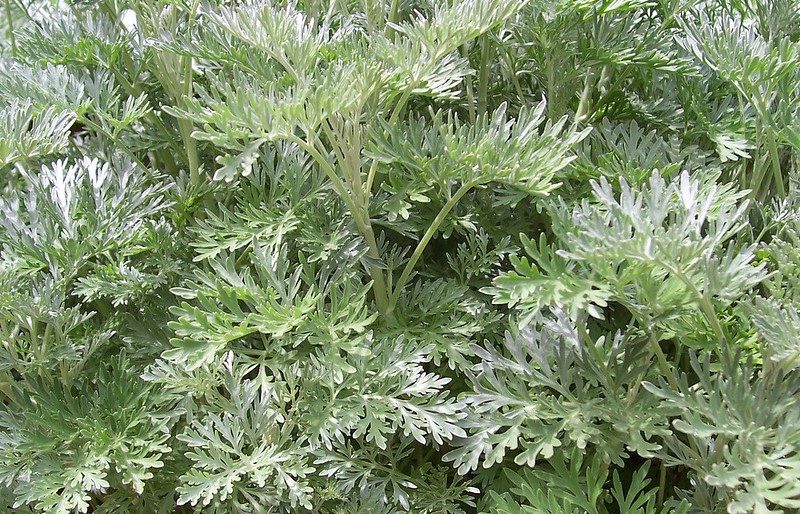
Mint
Mint repels ants, greenfly, blackfly, whitefly, flea beetle and caterpillars of the cabbage white butterfly.
Tansy
Tansy repels flea beetles and caterpillars of the cabbage white butterfly.
Garlic
Garlic repels cabbage fly and codling moth.
Borage
It is recommended to sow borage between the rows of all varieties of cabbage. It reduces the damage from caterpillars.
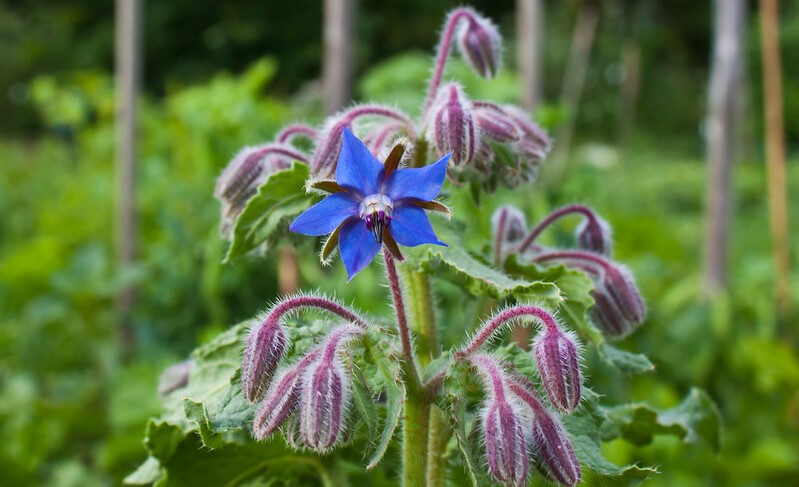
Dill
Dill sown next to cabbage repels greenfly, blackfly and whitefly.
Cabbage and celery
Some vegetables themselves have a strong smell. If cabbage is planted with celery, it will be protected from flea beetles and the cabbage white butterfly.
Colorado potato beetle
Catmint, coriander, nasturtium, marigolds and tansy repel Colorado potato beetle.
Flea beetle
Tabacco, mint, common wormwood (Artemisia absinthium), common rue (Ruta graveolens) and catmint repel flea beetles.
Nematodes
Marigolds and mustard repel some species of nematodes.
Greenfly, blackfly and whitefly
Greenfly, blackfly and whitefly don’t like the smell of most aromatic herbs, as well as the smell of onion, garlic, mustard, marigolds, coriander, fennel, dill, catmint and nasturtium.
Companion planting for vegetables: examples
All plants below are compatible and benefit from being grown together. They can be planted in the same place for several years without loss of productivity.
Potatoes, cabbage, spinach
On a bed 1m wide plant two rows of early potatoes at a distance of 50 cm from each other. Between them plant one row of cauliflower, kohlrabi or another cabbage. On the edges and between the rows of potatoes and cabbage plant the rows of spinach.
Members of the cabbage family suppress fungal diseases that damage potatoes, such as potato blight, and pests, such as wireworms.
Potatoes, radish, cress, cabbage, chervil, lettuce
On a bed 1m wide plant two rows of early potatoes at a distance of 50 cm from each other. On the edges plant radish and garden cress. Between the rows of potatoes plant kohlrabi (or another cabbage), chervil and lettuce.
Beetroot, dill, lettuce, cabbage, radish
On a bed 1 m wide plant three rows of beetroot. In the two rows on the sides plant one dill after every two beetroot. On the edges plant rows of lettuce and kohlrabi (or another cabbage), followed by rows of lettuce and radish.
Lettuce and radish
Alternate the rows of lettuce and radish. This will protect radish from the flea beetle.
Poor compatibility
Poor compatibility is usually a result of allelopathic activity – chemicals produced by the leaves and roots of plants. Such chemicals can suppress the growth of some plants. For example, the following vegetbles are INCOMPATIBLE:
sage and onion
marigolds and beans
common wormwood is incompatible with peas and beans and the majority of vegetables
tansy and cabbage
fennel is incompatible with tomatoes, beans, peas and spinach.
Image credits: Artemisia absinthium by Patrick Standish; borage by Gerwin Sturm.
Posts related to ‘Companion Planting for Vegetables in an Organic Garden’
Green Manures: Vegan and Organic Soil Improvers
10 Ideas for a Natural Organic Garden
Four Types of Organic Plant-based Fertilizers
Organic Weed Control: Why and How?
How to Make your Vegetable Garden Bee Friendly
Medieval Garden Plants and Layout: How to Design a Medieval Garden?
Garden Soil: Why Soil is Important and How to Restore it?
Growing Your Own Food: Why Organic is better?
Pin ‘Companion Planting for Vegetables in an Organic Garden’ for later
